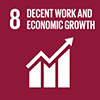Description/achievement of initiative
In 2007 New York City released PlaNYC, its far-reaching sustainability plan including 127 policy initiatives to achieve ten overarching goals to improve the infrastructure, environment, and quality of life in the city.
Source: World Resources Institute (2011) A Compilation of Green Economy Policies, Programs, and Initiatives from Around the World. The Green Economy in Practice: Interactive Workshop 1, February 11th, 2011
On Earth Day 2007 New York City released PlaNYC, its far-reaching sustainability plan that includes 127 policy initiatives to achieve ten overarching goals to improve the infrastructure, environment, and quality of life in the city. The plan aims to double the number of green jobs in 10 years, improve access to education, information, and coordination needed by workers and businesses to facilitate growth in the green economy, promote skill development to ensure New Yorkers meet requirements for green jobs, and increase demand for green products and services.
Various portions of the plan involve cleaning up brownfields (heavily polluted former industrial sites), encouraging public transportation, ferries and bicycling; creating more parks and playgrounds; planting one million trees within the five boroughs; reducing emissions in public buildings; and retrofitting or replacing diesel trucks. Additionally, the plan also calls for enhancement of public transportation and water infrastructure security. Since the release of the plan, the City has made great strides towards implementing the plan passing groundbreaking green buildings legislation, creating miles of bike lanes, opening acres of open space, cleaning the air, and reducing greenhouse gas emissions.
Reductions in greenhouse gas emissions from reduced vehicle traffic, support for biking and walking paths, improved buildings emissions standards, and creation of more green space are expected. It will also increase market opportunities for green industries.
Implementation methodologies
Arrangements for Capacity-Building and Technology Transfer
Coordination mechanisms/governance structure
Partner(s)

